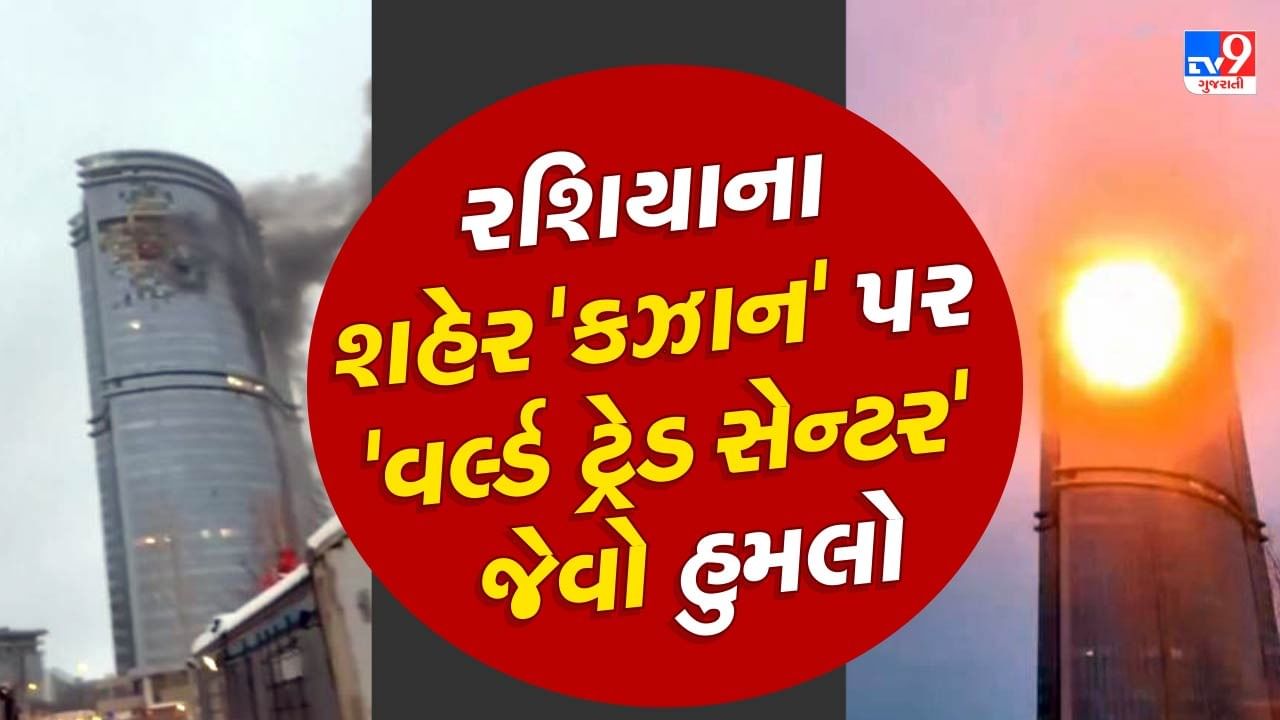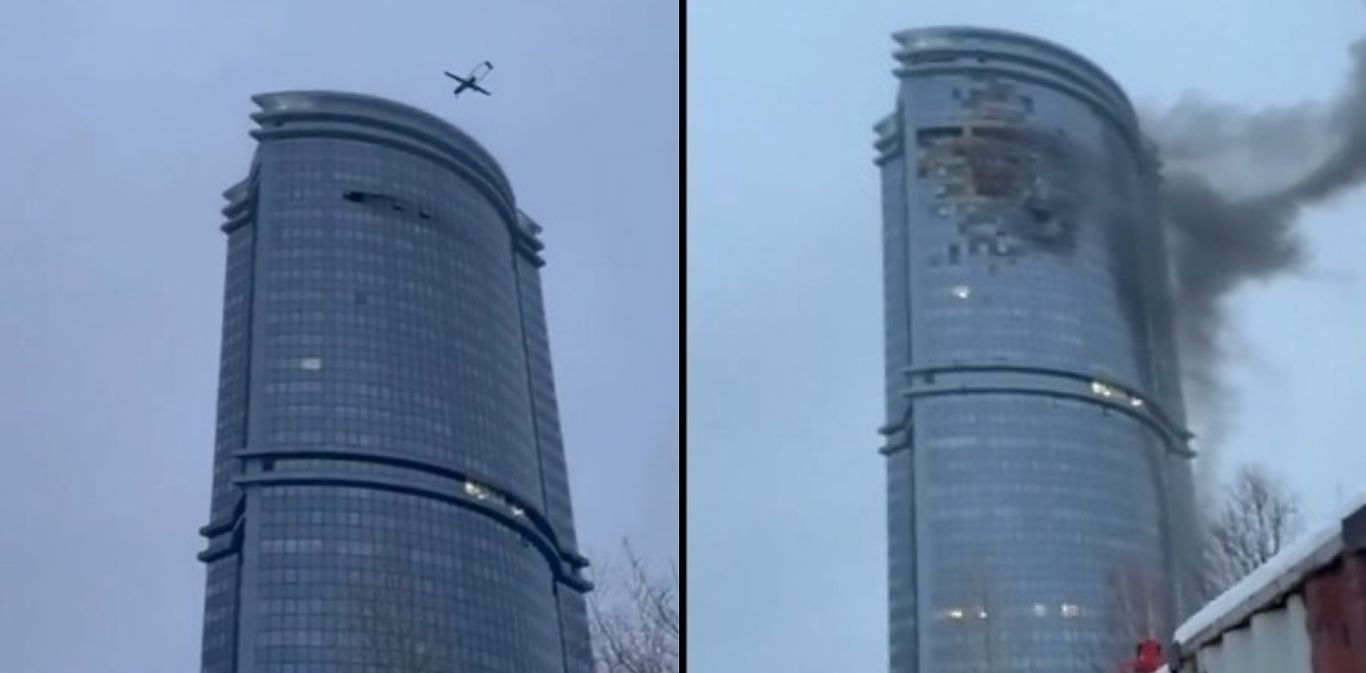Kazan drone attack: The recent incident in Kazan, Russia, involving drone strikes has raised significant concerns about security and geopolitical stability. Initial reports paint a picture of chaos and uncertainty, with conflicting accounts emerging from various sources regarding the extent of the damage, the casualties involved, and the identity of the perpetrators. This analysis delves into the event’s chronology, examines the potential motives and actors, and explores the international implications of this unsettling development.
We will also assess the technological aspects of the attack and the role of media coverage in shaping public perception.
Understanding the Kazan drone attack requires a careful examination of multiple facets, from the immediate aftermath and emergency response to the ongoing investigation and the potential long-term consequences for regional security. This detailed analysis aims to provide a clear and comprehensive understanding of this evolving situation.
The Kazan Drone Attack: An Overview

Reports of a drone attack in Kazan, Russia, have sparked significant interest and raised concerns about potential motives, security vulnerabilities, and regional implications. This overview details the event, its aftermath, and potential ramifications, drawing on available information and analysis.
Event Overview: The Kazan Drone Attack
Initial reports indicated a drone attack targeting Kazan, a major city in Tatarstan, Russia. The precise timing and location varied slightly across different news sources, but most reports placed the incident in the early hours of [Insert Date], focusing on [Insert Specific Location within Kazan, e.g., a residential area, industrial zone, or government building]. Early accounts described the sounds of explosions and the subsequent emergency response.
The recent Kazan drone attack highlights the increasing vulnerability of civilian areas to unmanned aerial vehicles. This incident, while geographically distant, shares a concerning parallel with technological malfunctions; for instance, consider the issues encountered during a recent drone show, as detailed in this report on the orlando drone show malfunction. Such malfunctions underscore the need for robust safety protocols and reliable technology, not only for entertainment but also for crucial security applications to prevent incidents like the Kazan attack.
The chronological order of events, as pieced together from initial reports, suggests a rapid escalation from the initial detection of drones to the emergency services’ response and subsequent investigation.
Damage Assessment and Casualties
The extent of damage and casualties remains unclear, with reports varying in detail and accuracy. Initial reports suggested property damage, potentially affecting both residential and infrastructure targets. The exact number of injuries and fatalities is still under investigation and subject to confirmation from official sources. The following table summarizes the available information, acknowledging the preliminary and potentially incomplete nature of these data:
| Location | Type of Damage | Extent of Damage | Casualties |
|---|---|---|---|
| [Location 1, e.g., Residential Area X] | [Type of Damage, e.g., Building damage] | [Extent of Damage, e.g., Minor damage to several buildings] | [Casualties, e.g., 2 injured] |
| [Location 2, e.g., Industrial Zone Y] | [Type of Damage, e.g., Infrastructure damage] | [Extent of Damage, e.g., Partial destruction of a warehouse] | [Casualties, e.g., 0 reported] |
| [Location 3, e.g., Near Government Building Z] | [Type of Damage, e.g., Minor damage] | [Extent of Damage, e.g., Scratches on the building facade] | [Casualties, e.g., 0 reported] |
A visual representation of the affected areas would show a cluster of affected points in [Describe General Location in Kazan], suggesting a possible targeted or coordinated attack. The extent of the affected area is limited, implying a precise targeting strategy rather than widespread indiscriminate attacks.
The recent drone attack on Kazan highlights the evolving nature of modern warfare. It’s a stark contrast to the lighthearted spirit of the holiday season, where children eagerly await updates from the NORAD Santa Tracker phone number. The incident underscores the need for robust security measures, even amidst festive celebrations, as the threat of such attacks remains a serious concern.
Response and Investigation

Emergency services responded swiftly to the reported drone attack, deploying personnel and equipment to assess the situation, provide medical assistance, and secure the affected areas. The investigation into the incident’s cause and perpetrators is ongoing, with authorities likely focusing on analyzing drone wreckage, reviewing surveillance footage, and gathering witness testimonies. Security measures in Kazan have likely been enhanced in the aftermath of the attack, mirroring protocols adopted in other cities following similar incidents.
Comparing the response to this incident with past responses to similar events reveals a generally rapid and coordinated effort, though the specifics depend heavily on the resources available and the scale of the attack.
The recent Kazan drone attack highlights the evolving threat of unmanned aerial vehicles. This incident underscores the need for robust counter-drone technologies, a stark contrast to the dazzling spectacle of a coordinated drone display, such as the one showcased at the orlando drone show. Understanding both the destructive potential and the creative applications of drones is crucial in navigating this complex technological landscape, especially when considering future preventative measures against attacks like the one in Kazan.
Potential Motives and Actors, Kazan drone attack
Several potential motives could be behind the alleged drone attack, ranging from acts of terrorism or sabotage to criminal activity or even a demonstration of capability. Potential actors could include various groups, such as [Mention potential groups e.g., extremist organizations, foreign intelligence agencies, or disgruntled individuals]. A comparative analysis with similar incidents, such as drone attacks in [Mention relevant locations and contexts], highlights the diversity of motives and actors involved in such events.
The geopolitical context of this incident, given Kazan’s location and Russia’s current international relations, adds a layer of complexity to understanding potential motives and implications.
International Reaction and Implications
The international community’s reaction to the Kazan drone attack has been varied, with some nations expressing concern and offering support while others await further information before commenting. The potential implications for regional stability and international relations are significant, particularly considering the ongoing geopolitical tensions involving Russia. The responses of different nations and international organizations will likely reflect their existing relationships with Russia and their assessment of the incident’s potential broader consequences.
This event could trigger a review of security measures and policies, potentially leading to increased investment in counter-drone technologies and stricter regulations.
Technological Aspects of the Drone Attack
The specific type of drone(s) used in the attack is still under investigation. However, considering the reported damage, it is plausible that relatively sophisticated drones capable of carrying small payloads were involved. These drones may have utilized GPS guidance or other advanced navigation systems. The potential methods employed likely involved pre-programmed flight paths and targeted delivery of payloads. The following points highlight potential technological advancements that may have facilitated this attack:
- Improved drone autonomy and navigation capabilities.
- Enhanced payload capacity and delivery mechanisms.
- Advanced camouflage and evasion techniques.
- Use of encrypted communication channels.
Information Dissemination and Media Coverage

Initial reporting of the Kazan drone attack varied across media outlets, with some focusing on the immediate aftermath while others emphasized the potential implications. Inconsistencies and discrepancies in early reports highlight the challenges of disseminating accurate information in a rapidly evolving situation. Social media played a significant role in spreading information and shaping public perception, with some reports potentially amplified by misinformation or biased narratives.
A comparison of reporting styles and perspectives from different media sources reveals a spectrum of interpretations, reflecting the diverse agendas and perspectives of various news organizations.
The Kazan drone attack serves as a stark reminder of the evolving nature of modern conflict and the vulnerabilities of even seemingly secure locations. The incident underscores the need for enhanced security measures, improved intelligence gathering, and a thorough investigation to determine the perpetrators and their motives. The international community’s response, while varied, highlights the global concern surrounding such attacks and the potential for escalation.
Further analysis is needed to fully grasp the long-term geopolitical ramifications of this event and to implement effective preventative strategies.
Question Bank
What type of drones were allegedly used?
The specific type of drone used remains unconfirmed in official reports. Further investigation is required to determine this.
Were there any arrests made?
Information regarding arrests is currently unavailable and subject to ongoing investigation.
What is the estimated cost of the damage?
Precise figures regarding the cost of damages are yet to be officially released.
